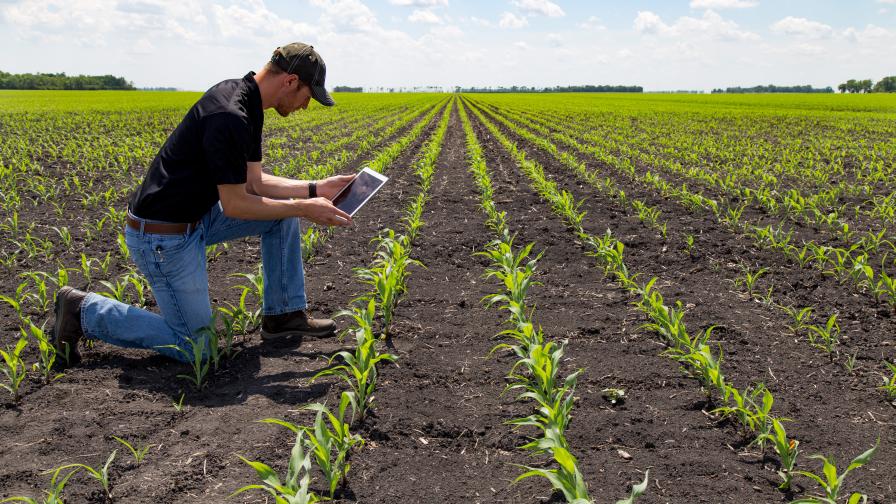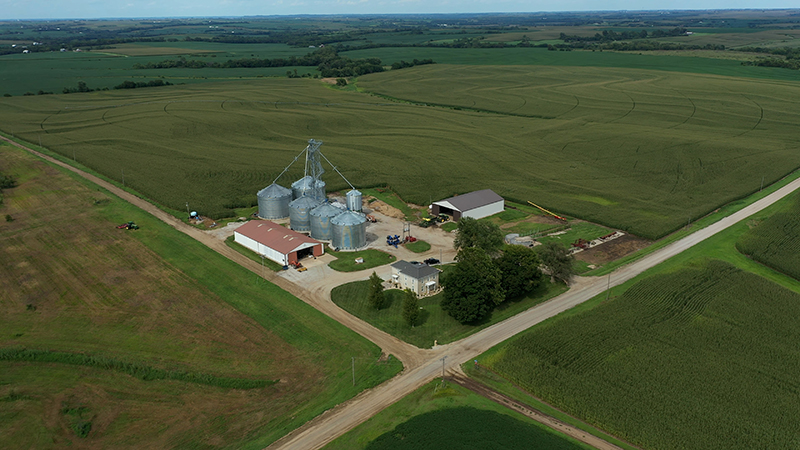High-Tech Corn Scouting

Social distancing requirements have highlighted digital systems that collect and aggregate data with less human interaction.
If planting intentions hold through the spring, agronomists and crop scouts will be scrutinizing a lot of corn acres this year.
The USDA recently released corn planting projections which indicated that 97 million acres of the crop would be committed to soil this season if farmers had their way, an 8% jump year over year. Much can change in a short time, but the desire to plant corn is undeniable.
Where crop was harvested in less than ideal conditions last year, one aftereffect could be soil compaction, notes Jason Tatge, President of Farmobile. “A fair chunk of acres were harvested well into this year as well, meaning more soil compaction than normal — especially when you have both a combine and grain cart running in soft fields. A recent study from The Ohio State University showed that soil compaction alone can cause a 10% to 15% yield hit.”
Ryan Hoffman, Territory Sales Manager, Eastern Corn Belt at Proagrica, said that last year’s increased number of prevent plant acres could present some unique challenges for growers. “In acres that had cover crops, there will likely been an increase in pest pressure early on for emerging crops, whether it’s insect or rodent pressure,” he notes. “Cover crops provide pests a place to overwinter. On acres that were prevent plant but did not get a cover crop, fertility management is important, as phosphorous availability could decrease due to Fallow Syndrome.”
Tools and Techniques
This spring, the ongoing need to deliver information while honoring social distancing has been both a burden and a blessing for agronomists using connected products to collect, organize, and disseminate information to farmers. Hoffman notes that with Progrica’s Sirrus app, data from almost any source can be collected and shared across agX-compliant applications.
“Relationships can be created so that scouts can share field information as well as scouting reports with agronomists and growers,” says Hoffman. “Information can then be shared among relevant parties without having to be in the same room, increasing efficiency while maintaining safe social distance.”
For agronomists and consultants, while scouting corn fields is old hat across the Midwest, new and emerging technologies mean it’s “definitely not your grandpa’s scouting plan,” says Erich Eller, Owner of independent consulting firm ForeFront Ag Solutions, Huntington, IN. He’s been working on a number of techniques to increase the efficiency, accuracy, and coverage of his scouting program.
Eller’s three-prong approach starts with data from DTN Smart Traps to monitor key corn pests, in particular western bean cutworm. The traps are preset with lures to attract target pests, and Eller receives an email each morning with a report on pest activity.
The second prong is the deployment of weather stations that not only track climatic activity, but also provide a measure of leaf wetness. Combined with modeling algorithms, Eller can get a clearer picture of when a disease is likely to strike so scouts can be dispatched to ground truth the affected fields.
The third prong incorporates imagery, and Eller has brought in Taranis as a service provider to deliver what they need. “We utilize a combination of resolutions, including 1.2 meter satellite resolution images, manned air flights at 9 cm, and drones at 0.3 mm,” he says. “The drone images can identify nutrient deficiency, weeds, disease, and stand counts.”
To pull it all together, iPad-toting scouts can georeference field observations and pull all the data together using the FieldAlytics Explorer app, a program from EFC Systems. “Ultimately it allows us to get growers a full scouting report,” says Eller.
He adds that machine data collected at planting from companies like Climate, John Deere’s JDLink, and Farmobile deliver value in the scouting process. “If we have the VRA seeding recommendation, we can pull the map into the iPad so when we are out doing early stand counts, we can compare to what’s planted and know for sure whether we lost germ or not,” says Eller. “We have fields that could go from 26,000 to 36,000 very quickly.”






